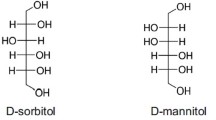Summary
In a biometrically planned, double-blind study on 12 Oedema-free male patients the saluretic effect of muzolimine 30 mg was compared with furosemide 40 mg. The plasma level of muzolimine was determined and correlated with its pharmacodynamics. In terms of excretion during the 12-hour observation period muzolimine 30 mg had as great a cumulative effect as furosemide 40 mg. There was a significant difference in the time-response curve. During the first two hours furosemide 40 mg had more saluretic effect than muzolimine 30 mg. Between two and four hours there was no significant difference between the two substances. Between four and six hours, however, muzolimine was somewhat more effective than furosemide, although the difference did not reach the level of significance. After 6 h there was no longer any difference between the two compounds. The half-life of the fall in concentration of muzolimine in plasma was 3.7 up to 10 h after its administration. The time-response curve of the increased urine excretion correlated well with the time course of the concentration of muzolimine in plasma.
Similar content being viewed by others
References
Berg, K.J., Jørstadt, S., Tromsdal, A.: Studies on the clinical pharmacology of a new potent diuretic, BAY g 2821. Pharmatherapeutica1, 319–332 (1976)
Fauchald, P., Lind, E.: Double blind cross-over study on the diuretic effect of BAY g 2821 and furosemide in patients with cardiac edema. Pharmatherapeutica1, 409–414 (1977)
Heinrich, F., Loew, D., Dýcka, J.: Zur diuretischen Wirkung von BAY g 2821 beim hepatogenen Aszites. Curr. Med. Res. Opin.4, 706–715 (1977)
Hoppe-Seyler, G., Heissler, A., Cöppencastrop, M., Schindler, M., Schollmeyer, P., Ritter, W.: Investigations on the effect of a new diuretic BAY g 2821 in patients suffering from kidney diseases. Pharmatherapeutica1, 422–429 (1977)
Meng, K., Loew, D., Stoepel, K., Hoffmeister, F.: Zur Pharmakologie von BAY g 2821, einem high ceiling Diuretikum mit langer Wirkungsdauer. Curr. Med. Res. Opin.4, 555–563 (1977)
Muschaweck, R., Hajdú, P.: Die salidiuretische Wirksamkeit der Chlor-N-(2-furylmethyl)-5-sulfamyl-anthranilsäure. Arzneim.-Forsch.14, 44–47 (1964)
Ritter, W.: Thin-layer densitometric determination of BAY g 2821 in the nanogram range. J. Chromatogr.142, 431–440 (1977)
Röckel, A.: Diuretic effects of the pyrazolinon compound, BAY g 2821 in patients with advanced renal failure. Curr. Med. Res. Opin.4, 574–579 (1977)
Snedecor, G.W., Cochran, W.G.: Statistical methods. 6th ed. Iowa: Iowa State University Press 1969
Author information
Authors and Affiliations
Rights and permissions
About this article
Cite this article
Loew, D., Ritter, W. & Dýcka, J. Comparison of the pharmacodynamic effects of furosemide and BAY g 2821 and correlation of the pharmacodynamics and pharmacokinetics of BAY g 2821 (muzolimine). Eur J Clin Pharmacol 12, 341–344 (1977). https://doi.org/10.1007/BF00562448
Received:
Revised:
Accepted:
Issue Date:
DOI: https://doi.org/10.1007/BF00562448




